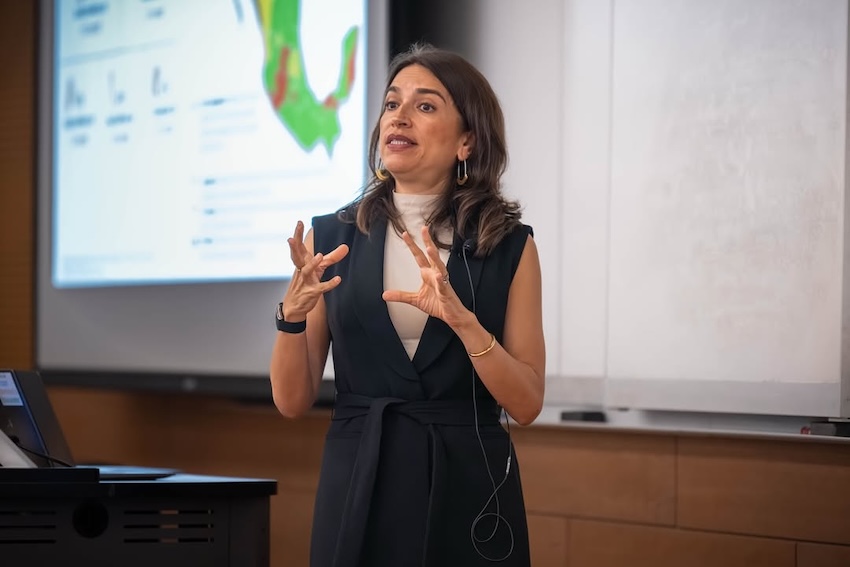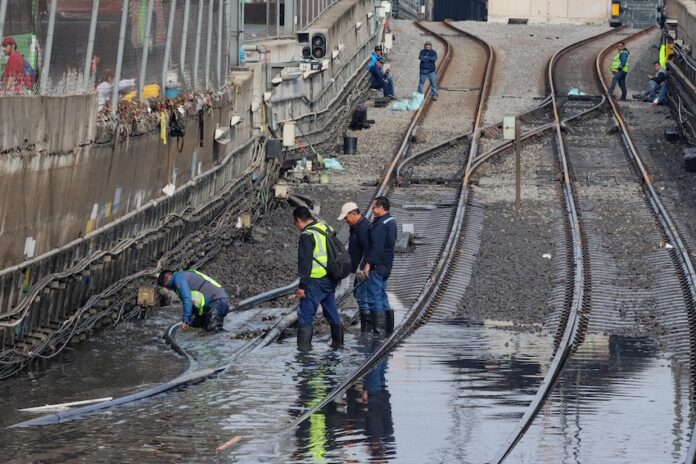As Congress prepares to consider the 2026 budget package, infrastructure investment is becoming a point of contention.
When the government focused its attention on debt reduction earlier this year, the Finance Ministry (SHCP) responded by shrinking public investment in infrastructure.

The SHCP reported that between January and August of this year, investment in public works such as roads, bridges, schools and hospitals shrank to 509.8 billion pesos (US $27.7 billion), a 33.7% reduction in real terms, the biggest reduction in 30 years.
The sector most impacted was water supply, specifically drinking water but also sewage treatment, as spending on public works in this sector in the first eight months of the year was 75% lower than during the same period last year.
Jorge Cano, director of the public spending and accountability program at the think tank México Evalúa, criticized the methodology adopted for debt reduction.
“Unfortunately, the main strategy [of the government] is not a reduction in spending [on welfare programs], but rather a reduction in public investment,” he told the newspaper El Sol de México.
Cano said the debt reduction plan lowered public investment to 2.3% of GDP in 2025, a 20% reduction from the year before and the lowest amount since 2019, the first full year of the previous administration.
“This limits the country’s potential for economic development and weakens social rights by reducing investment in streets, highways, ports, fiber optics, electricity grids, etc.,” he said.
The National Bank of Public Works and Services (Banobras) seemed to affirm Cano’s analysis in its 2025-2030 Institutional Program released last month.
Banobras estimated that Mexico requires an investment of 2.67 trillion pesos (US $145.2 billion) to close infrastructure gaps, trigger economic growth and promote regional connectivity.
Among the critical infrastructure gaps identified by Banobras are transportation (roads, railways and ports) and public utilities such as electricity, water and waste management.
“These resources are key to promoting intermodal connectivity, balanced regional development and sustainable urban growth,” Banobras stated. Its report identified the greatest challenge as road-building, which requires roughly 570 billion pesos (US $31 billion) to modernize highways, build bypasses and strengthen capacity at border crossings.
During her Oct. 6 press conference, the president expressed that infrastructure investment would increase in her second year in office and that “there is a very clear program of strategic [infrastructure] projects for this six-year term, and many that will carry over into the next.”
In a column for the newspaper El Universal, Mariana Campos, an economist and managing director of México Evalúa, voiced concern for what she called the lack of vision in the 2026 budget, which sets infrastructure investment at 2.5% of GDP. According to Campos, this is below the average of 3.1% recorded between 2013 and 2023.
Expansión magazine reported that the 2026 budget would have Mexico investing less in infrastructure than in paying interest on its debt. By the end of next year, the gap between physical investment and the financial cost of debt could reach record levels.
Without infrastructure investment, Mexico could have trouble meeting the budget’s gross domestic product (GDP) estimate, Campos said.
Total public debt could reach a record level of 54% of GDP if growth expectations are not met. And, she pointed out, in 13 of the past 17 years, official growth projections have proven overly optimistic.
Campos said the budget does not appear to be a plan to catapult Mexico into the 2030s, calling it “a roadmap for managing shortages without altering the status quo.”
With reports from El Sol de México, El Economista and Expansión
